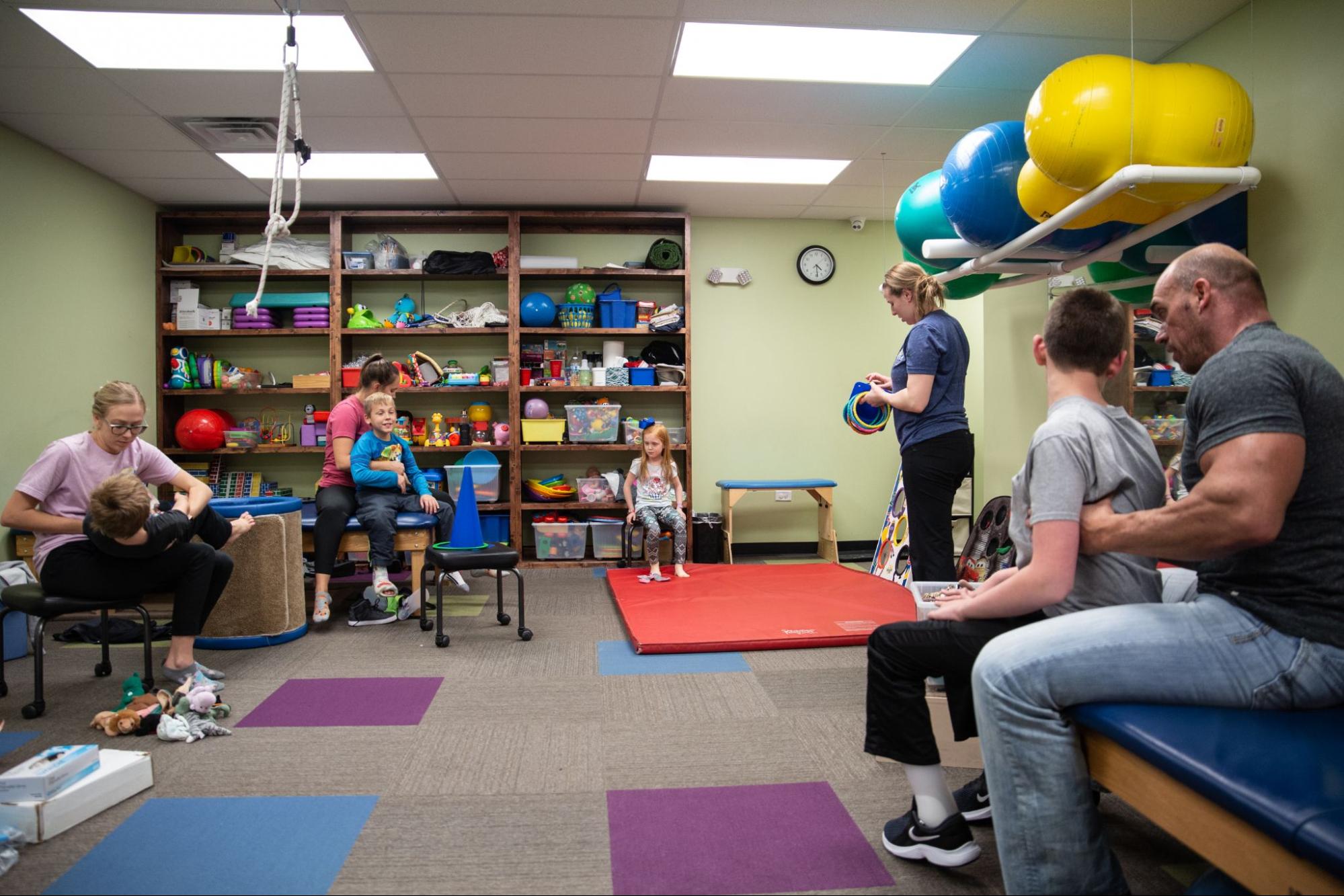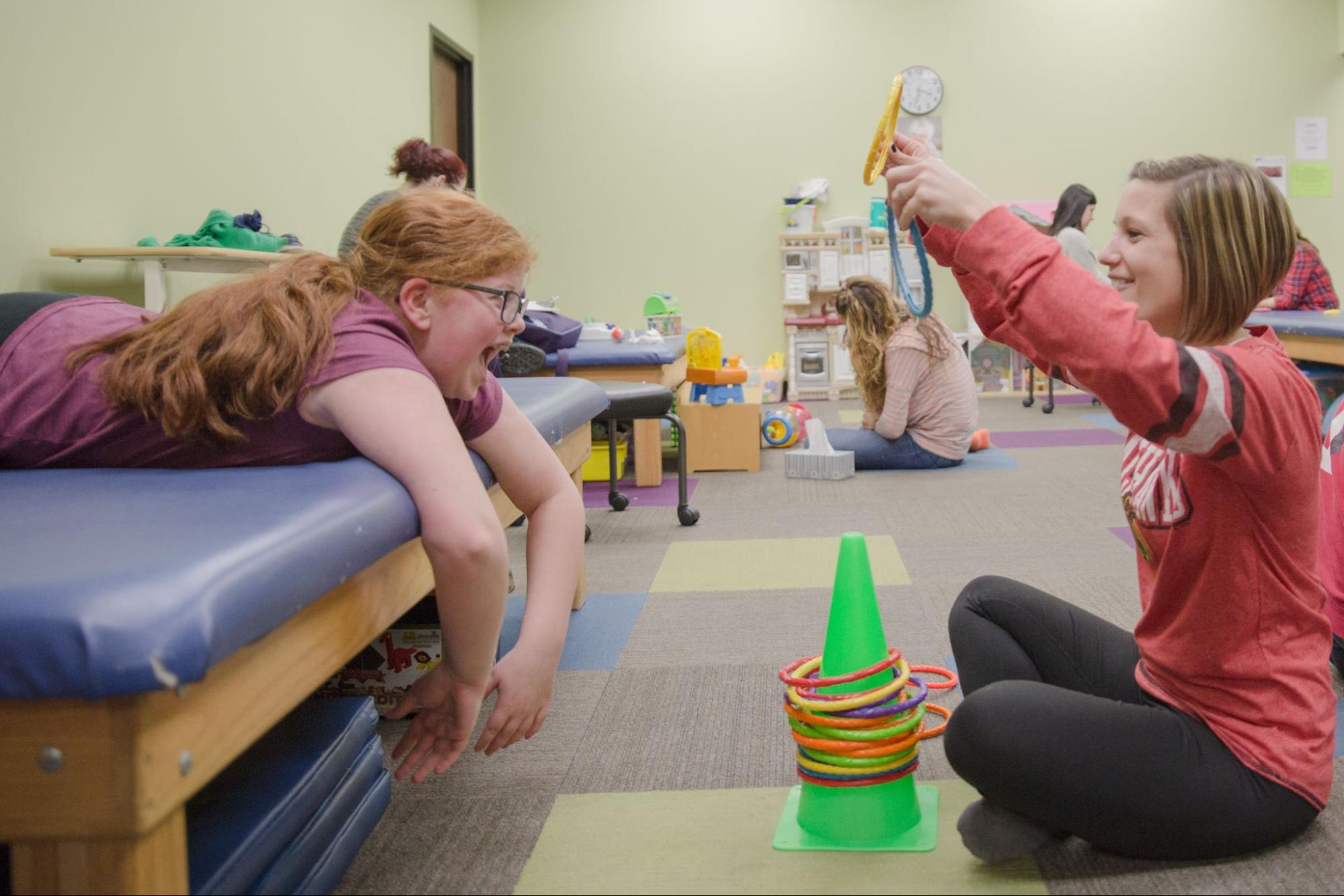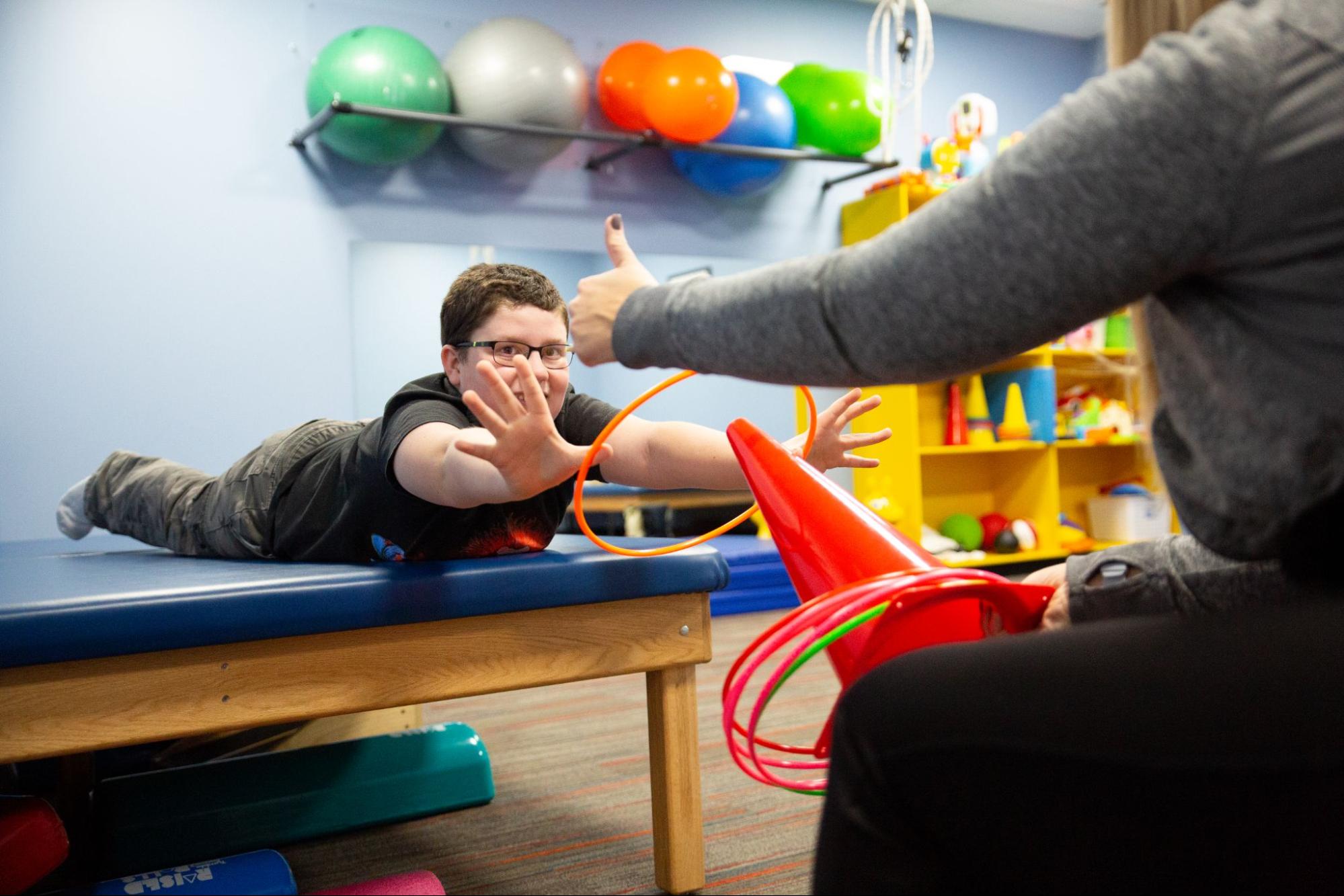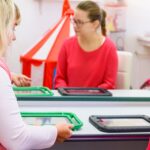We love seeing you and your child for each kids’ physical therapy session at our Westside clinics. However, sometimes we only get to see you once a week.
Depending on insurance, many families can only get one visit per week for kids’ physical therapy.
While we are always going to strive to get the G.R.E.A.T. Outcomes for your child, only so much work can be done in the one hour at the clinic, which is what makes keeping up with the recommendations for at-home exercises crucial.
Below are three reasons why keeping up with homework in kids’ physical therapy is important:
- Motor planning (remembering tasks) can be challenging
It can be difficult to remember what you ate for lunch yesterday. Now imagine learning a brand new skill (walking, standing using correct gait mechanics, balance exercises) that you have not done correctly for years. This is common to find when starting a new kids’ physical therapy plan.
Some children will find ways to compensate for things they are unable to do — just as adults sometimes do for a quick moment— such as walking, balancing and strength. While it helps in the moment, for a child, it can lead to longer-lasting problems, which is why it is also important to treat signs early.
All humans have gross and fine motor skills, which are skills that involve actually doing the task that helps them to be independent. Motor planning skills involve remembering the steps needed to complete those tasks.
For a child trying to improve their walking and gait mechanics, they may do heel taps, or toe taps followed by a heel tap to simulate the walking motion. Exercises can be isolated to help children learn the steps easier. For many, it comes naturally and we don’t have to think about the entire walking motion. Take a second and walk in slow motion and feel each part of it (toe leaves the ground in back, your heel hits the ground in front to restart the motion).
In the above example:
- The child started with their toe on the target behind them
- They then swing their leg through before extending their knee to tap their heel on the target in front of them.
This isolates the entire walking motion of the swing phase. This is repeated numerous times to get blocked practice needed for learning a new motor plan. Sometimes the same exercise can be worked during a session at the clinic and at home. Read more about What A Physical Therapy Session Looks Like Here
If a child cannot remember the task in one motion, breaking it down can be easier for them to remember. But if they are only doing the kids’ physical therapy exercise once a week at the clinic, it may take longer to reach the major goal of correcting gait mechanics and mastering the skill in one motion because they may not remember the smaller steps that lead to the big picture.

- Better chance to get quicker results in kids’ physical therapy
A large component of physical therapy is building strength. It will vary from child to child on what needs help, but the importance of keeping up with at-home exercises is the same.
It takes work to maintain the strength built, especially if it is new muscles.
If you went to the gym one time a week, you may not see the results you want and as quick as you want. So, you could probably do workouts at home to work toward your fitness goals.
The same goes for a kid in therapy. If they are out of the clinic for six days between sessions, it may take more time to build that strength up and reach therapy goals.
And for someone who is working out for the first time or working muscles in kids’ physical therapy for the first time, it will take time to even want to begin the journey and find motivation to do it. And then it takes time to get used to this new lifestyle.
If a child can do more at home, they can break the old habits. A child can unfortunately spend more time practicing what they shouldn’t be doing if at-home exercises are not worked on.
Keeping a consistent Home Exercise Program (HEP) for kids’ physical therapy that the therapist helps design will allow a child to become used to it being part of their daily routine. A goal Westside therapists have is that the exercises and routines become as regular as “brushing your teeth.”
If you’re designing your workout plan, you’re going to want/need to have a routine that you can follow to reach the goals you’ve set.
If therapy — depending on each case — is going to become a major part of a child’s life, it is important that they are comfortable with it: just like they are with brushing their teeth.
Kids’ physical therapy is hands-on and a 1:1 therapist to child ratio. While the 1:1 therapist to child ratio is beneficial and not common everywhere, it also may take time for the child to be comfortable with the therapist.
Our therapists will always take time to get to know the child before fully diving into therapy with the goal that the therapist becomes a “prefered person” (someone they know, trust and like) for the child.

- Therapy is a team effort
Therapy is a team effort that includes the patient, their family, and their therapist(s). The best outcomes occur when that team works together towards a common goal.
To put yourself in the child’s shoes, think about any goals you have had and how much work it took to achieve them. The family members of the child’s therapy team can help them work toward their therapy goals more frequently. This makes them less difficult to achieve and the child will get better outcomes overall.
Also, think about the people you leaned on when trying to reach any sort of goal you’ve set.
It can also make things easier on the child to see you doing kids’ physical therapy with them.
Our therapists will spend a few minutes before and/or after each session to let you know what was worked on and what can be worked on more at home for kids’ physical therapy.
Please note: Our therapists know how busy life can be outside of therapy and will never provide too much at-home work to do. Whether it be one exercise one day a week, or a couple exercises per day 2-3 times a week, the therapist will work with you to find a plan that fits your family’s life best.
When you come to Westside, you become part of our family and we strive to be “A Family to Lean on.”
For more information, call 815-469-1500 or click below to get started in kids’ physical therapy.







